When rumblings of the PocketGo S30 first started it was due to be another RK3326 OGA clone device. They even went with the same 3:2 ratio 480×320 display in preparation. But I know from speaking to the BittBoy/PocketGo team that they’re not keen on EmuELEC as it can be difficult to get to grips with. At some point they decided to try and keep things simple by going a different direction, whilst for whatever reason (possibly price) also going with different hardware.
There’s definitely a balance to be struck. Looking in the Facebook groups you’ll often come across people who are frustrated with the difficulty of setting up EmuELEC or getting various ported games running on OpenDingux. I can only imagine the volume of emails that vendors must get demanding to know how to get their game running. It’s easy to see why some vendors prefer straight forward “pick up and play” devices for their customers. I must admit, I am one of those users. I don’t mind some setup and customisation, but endless meddling with config files reminds me of being at work.
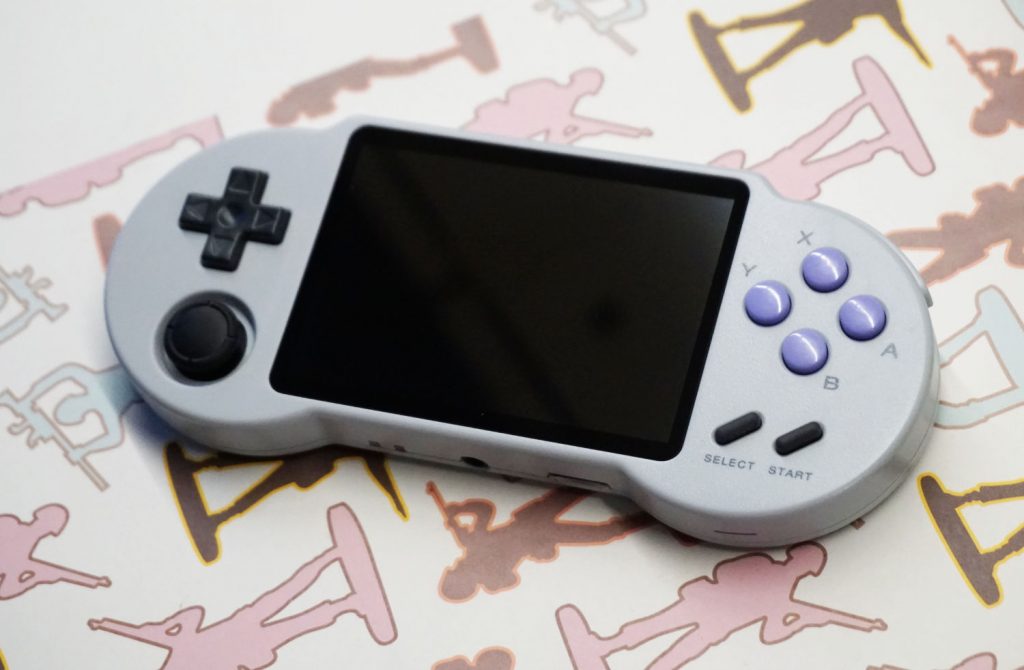
The S30 is a sort of middle ground between those simpler machines, and more complex and powerful handhelds that offer more customisation. Did the team achieve their goal though?
BUILD QUALITY
As mentioned in the previous post about the S30, the design is heavily borrowed from that of the 8BitDo SN30 controller. In fact the same design company (GWOWO) are behind the design of the S30. From what I gather 8BitDo weren’t very happy when they caught wind of this handheld going by the SN30 name, hence why it was changed to S30 before release.
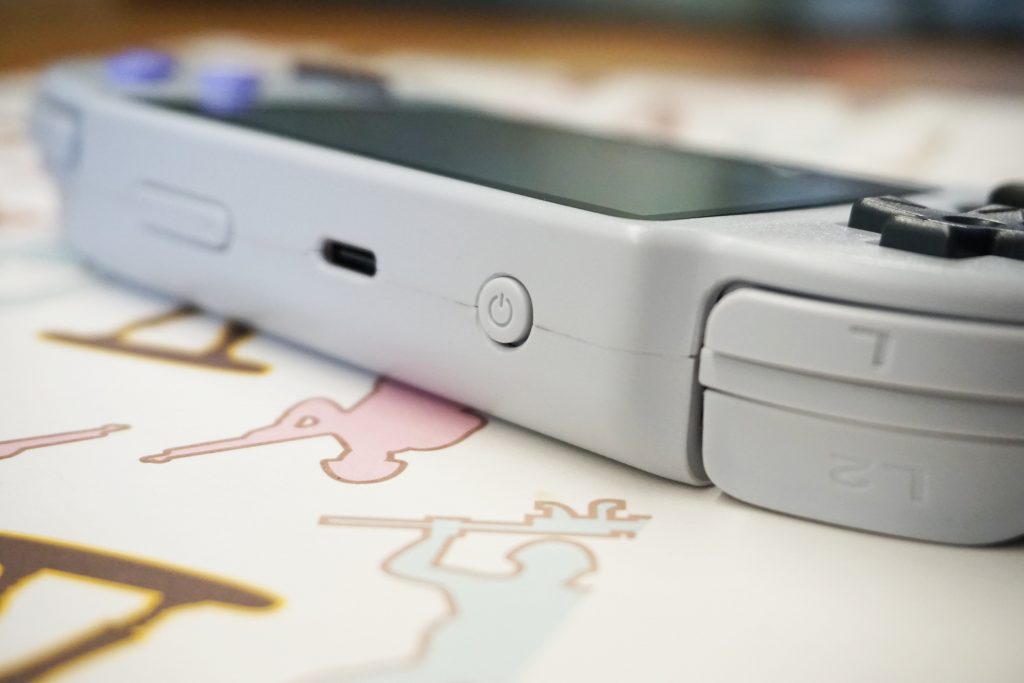
There isn’t much to complain about in its construction. The plastic feels fairly thick and has a nice matte textured finish. The shell is very well moulded and all edges sit flush together perfectly.
Overall the quality of construction is probably the best that the BittBoy/PocketGo team have released.
CONTROLS
The d-pad and buttons feel OK. The d-pad definitely takes some breaking in, and mine seems prone to registering down when hitting left or right, at least initially. With time it smooths out a bit, or maybe I adjusted to compensate. Either way it’s not bad now but I prefer Anbernic’s d-pad.
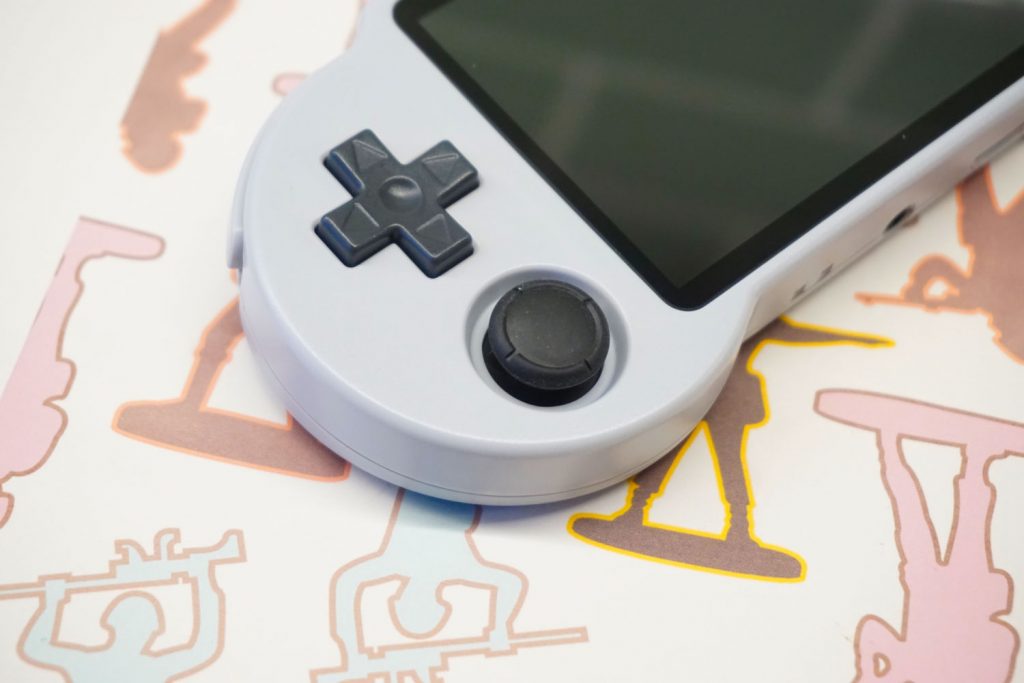
The lower shoulder buttons feel a bit strange, they sort of pivot on the vertical axis rather than pressing in to device. When pushed in they expose a gap in the shell that means you can see right inside. A really strange design, but it works I suppose.
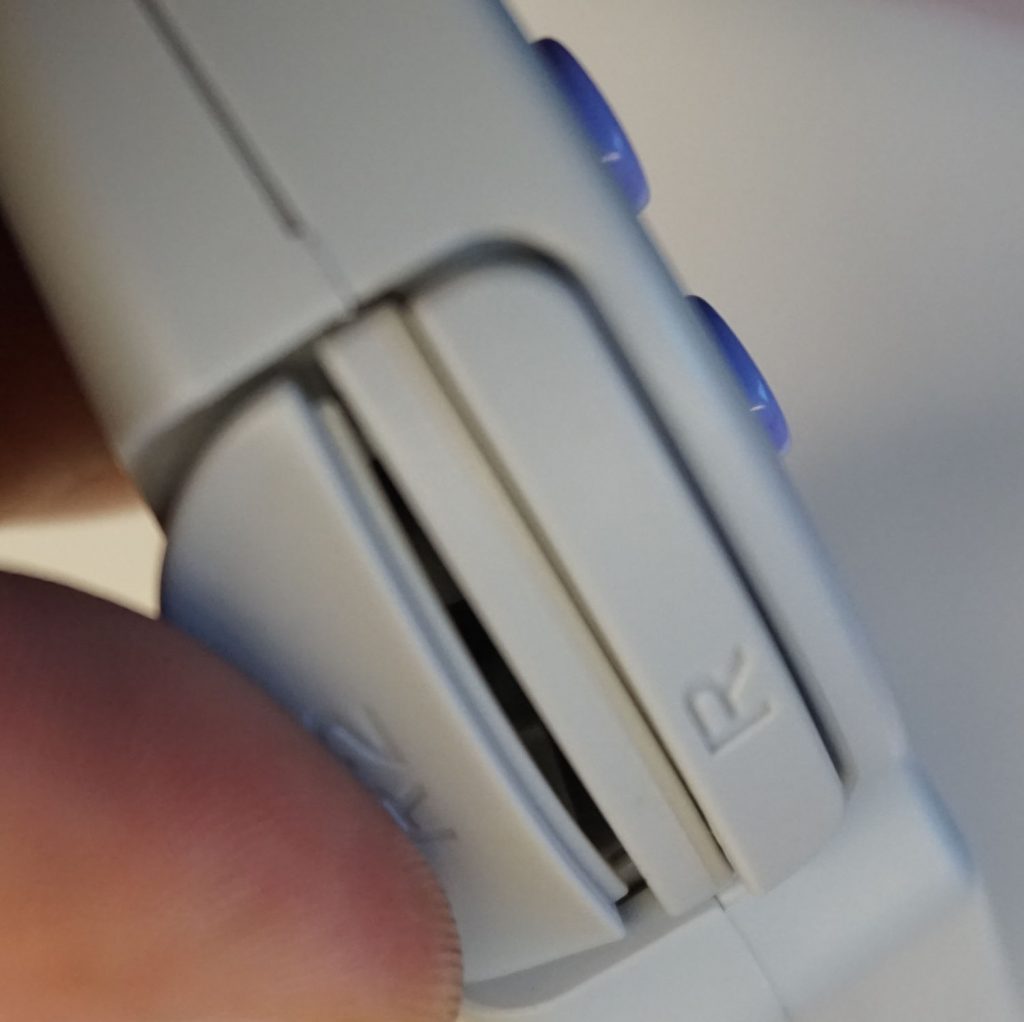
The rubber start and select buttons stick a little far out of the shell compared to ABXY, but in all honesty they don’t really get in the way and they’re quite stiff so you probably won’t accidentally press them.
The single analog stick sits neatly under the d-pad and is nice enough. It’s not mapped to the d-pad or anything silly and it does click when pushed straight down. There’s a rubber cap on top, which I guess can be changed out for Switch ones as the design is the same.
The device isn’t all that comfortable for large hands, you can’t wrap your fingers around it because your finger tips will overshoot the shoulder buttons by miles. I have to arch my fingers to hit the shoulder buttons, which is quite uncomfortable.
LCD
IPS displays with wide viewing angles and a vibrant, colourful image are run of the mill these days, and the S30 has just such a display. Having said that, laminated displays are also becoming the norm thanks to Anbernic, but the S30 doesn’t have that luxury. My unit does have a small amount of light leak around some edges, but it is very faint. Slightly more concerning is that if you apply any twisting pressure to the device, the light leak intensifies tenfold until you let go. Don’t twist it, would be my advice!
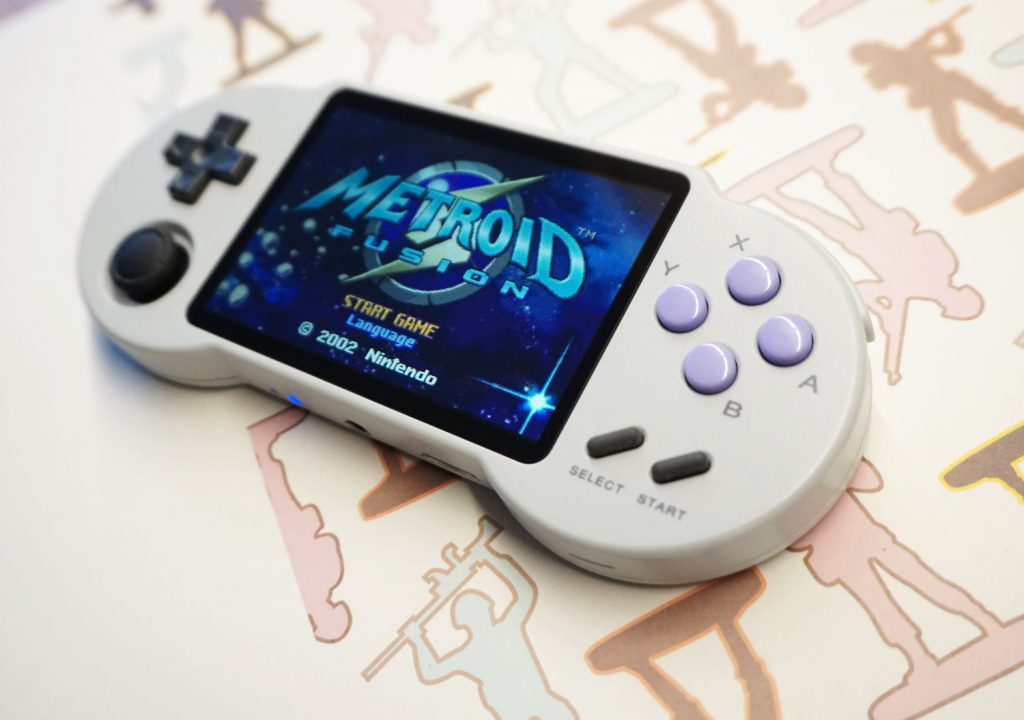
As with the majority of current RK3326 handhelds, the S30 has a 480×320 3:2 aspect ratio display. If GBA is your favourite handheld you should be happy because it is a perfect match. It is an awkward resolution for many other systems though, and actually they messed up the scaling for GBA despite having the perfect LCD. More about that later.
PERFORMANCE
The PocketGo S30 houses the AllWinner A33 quad core CPU at 1.3Ghz, and 512MB RAM. It’s an old chip from around 2014 and you can still find cheap tablets and TV sticks running Android 4.4 on the same hardware. Its performance is much better than the JZ4770 (think RG350 etc) but not quite as good as the RK3326 (OGA, RG351P etc). It’s an awkward middle ground that we should really be leaving behind now, but it’s a cheap chip and is capable enough to comfortably run a lot of older systems, as well as some newer ones.
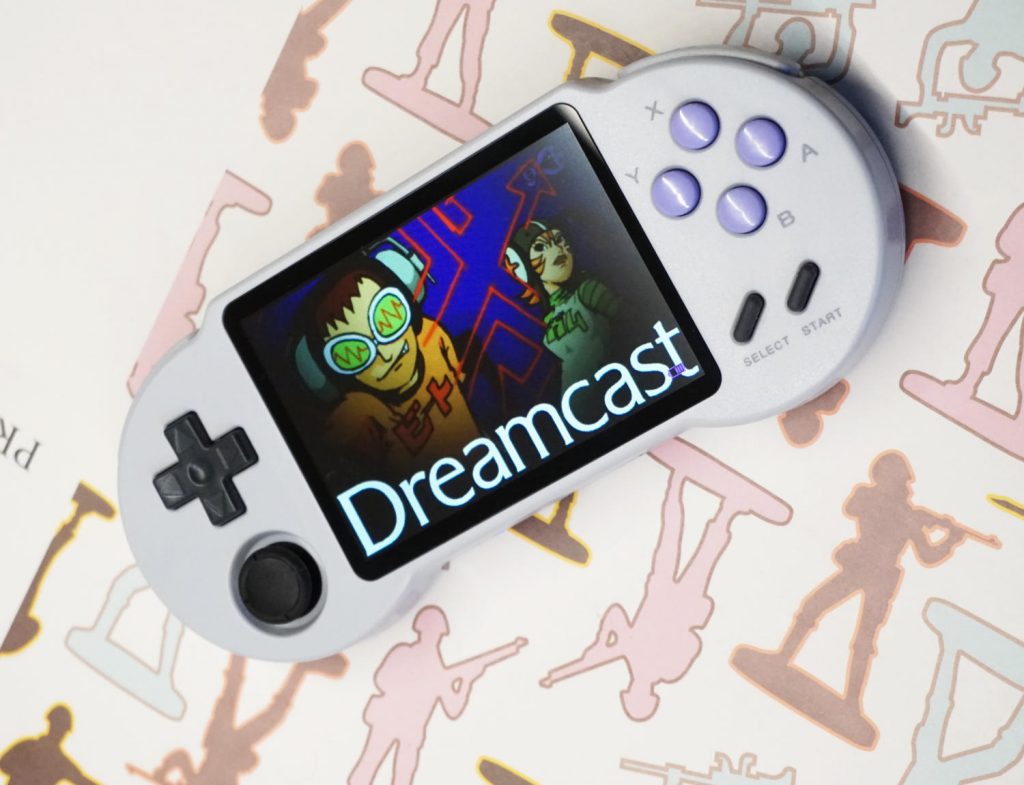
Compared to the Ingenic JZ4770 it opens the door to some Dreamcast, N64 and PSP emulation. A more accurate analogy might be that it cracks the door and peeks in. You’re going to need to be very open to the idea that your favourite game won’t run well or at all. Performance of those systems is touch and go. In fact, despite N64 being shown as an option in some promo videos, the emulator is absent from the stock firmware apparently due to performance issues.
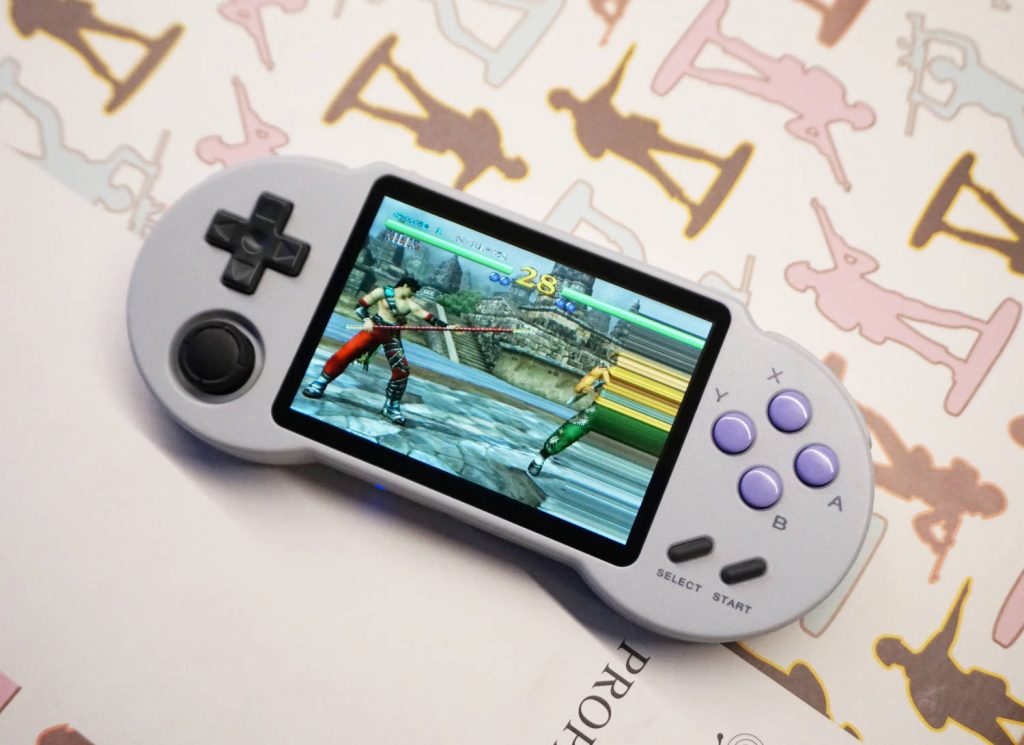
The battery life of the PocketGo S30 is very good, better than any of the RK3326 handhelds I’ve tested. Of course it depends in which emulators you spend most of your time, but you won’t be disappointed. I’d say 4-6 hours depending on usage.
STOCK OPERATING SYSTEM
The stock firmware and the way it’s configured speaks to the simplicity that the PocketGo team wanted from this handheld. Given that the S30 OS is based on Linux and contains a microSD card, you’d be forgiven for expecting it to be setup the same way as our other Linux based handhelds. Actually it’s not the same. The kernel is contained on a chip soldered to the mainboard, rather than on the SD card itself. It’s currently inaccessible to us as users.
That means that the microSD card is fully readable in Windows, with no hidden partitions. Unfortunately it also means that the kernel and its configuration isn’t easily accessed or re-flashed yet. The SD card contains the emulators and cores, the GUI and the ROMs, along with some other bits and pieces. You can also access all of this content just by plugging the device into your PC. It makes life very easy. Unfortunately there are some issues with the way the stock system is set up though.
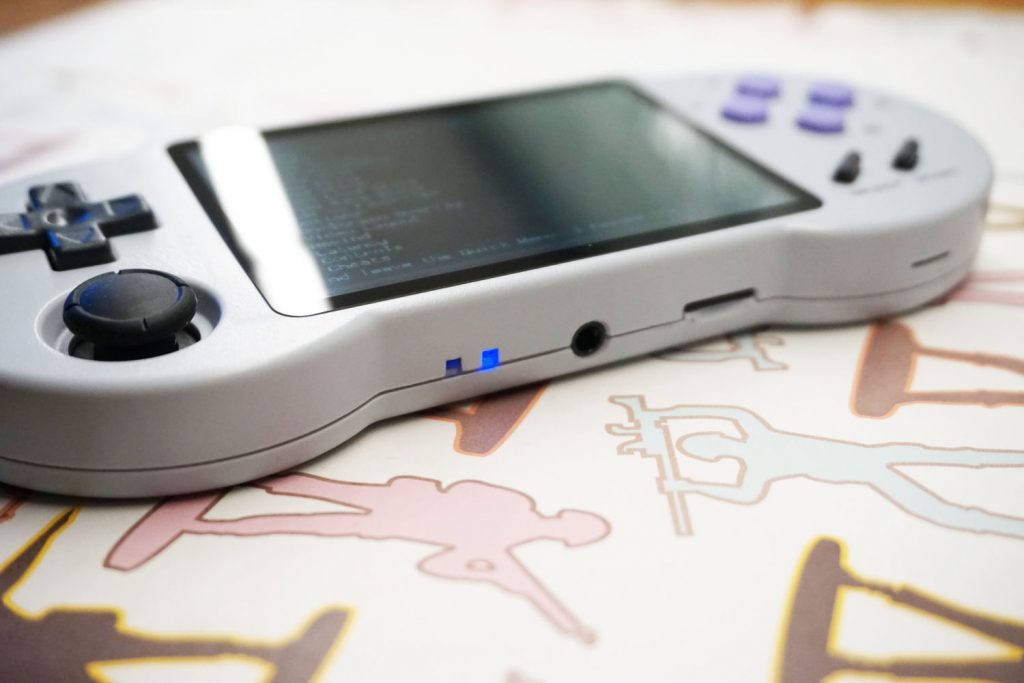
Some of the emulators are ones we know quite well already. One of the two included GBA emulators is gpSP, but it’s been ported to the system in such a way that the scaling is totally messed up. Bear in mind that the aspect ratio and resolution of the S30 is literally perfect for 4x integer scaling of GBA. They really messed that up. SNES and Mega Drive are also scaled incorrectly. It’s like they’ve taken emulators for a 320×240 screen and just stretched them to fit 480×320. It’s very obvious and looks horrendous. Check the text at the bottom of the screen. The top S30 is running gpSP stock, and the second machine is running the mGBA core in RetroArch.
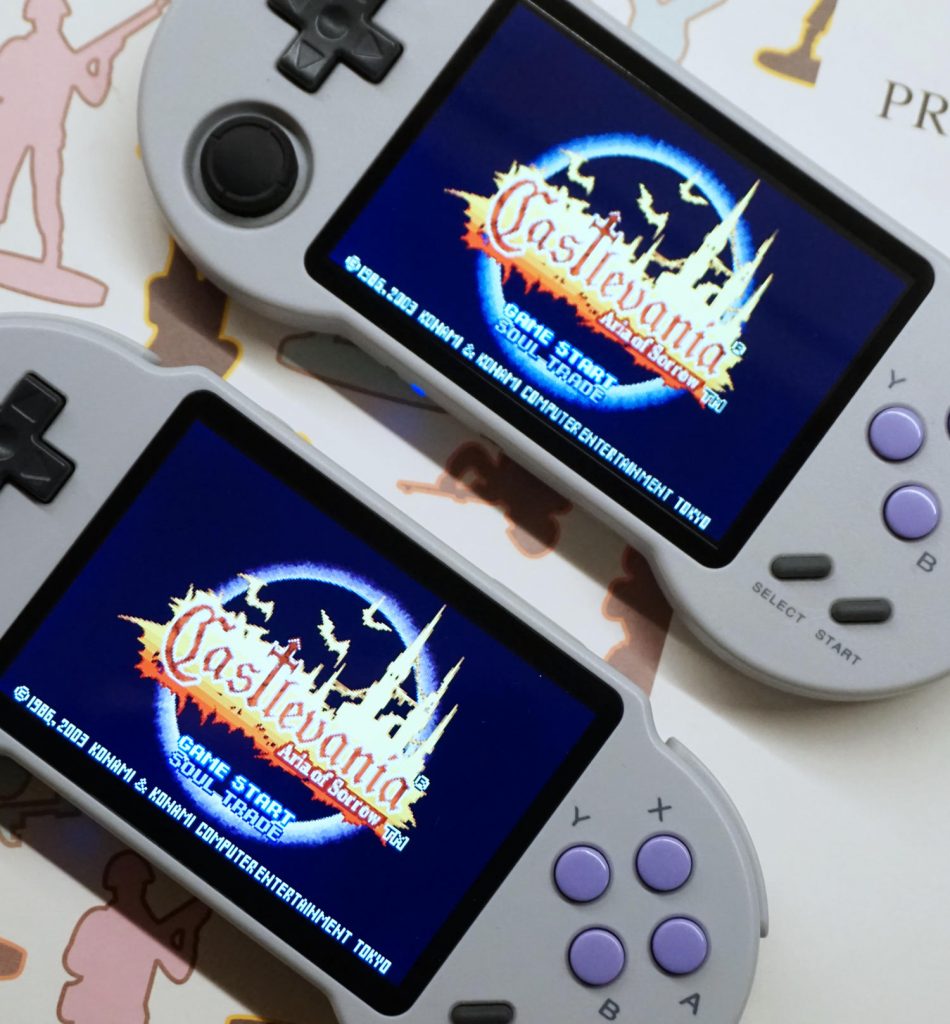
The stock emulators are as follows. Bear in mind my scribblings in the notes column are not related to performance. They only relate to scaling methods and emulator options.
| System | Emulator | Notes |
|---|---|---|
| Super Nintendo | Snes9x4D | Bad scaling |
| PC Engine | Temper v1.24.2 | Bad scaling, possible to remedy to some extent in settings |
| WonderSwan Color | ? | Power button kills the emulator instead of bringing up options |
| Dreamcast | FlyCast core | No settings |
| Final Burn Alpha | FBNeo | No settings |
| NES | FCEUX | Bad Scaling |
| Game Boy Color | Gambatte | Bad Scaling |
| Game Boy Advance | gpSP | Bad Scaling |
| Mame | MAME 2003 core | Bad Scaling / No settings |
| Game Boy Advance | mGBA core | Scaling seems OK / No settings |
| Neo Geo Pocket | ? | Power button kills the emulator instead of bringing up options |
| Playstation | Pcsx4All | Forced widescreen? |
| Mega Drive | PicoDrive 1.93 | Bad Scaling |
| PSP | PPSSPP | Looks OK |
You’ll notice that some emulators are running on RetroArch cores. These have very basic in game menus that only allow for save/load states and are commented with “No settings”. It’s possible that you can make tweaks to these by editing config files on the SD card. I am really not interested in going down that rabbit hole though.
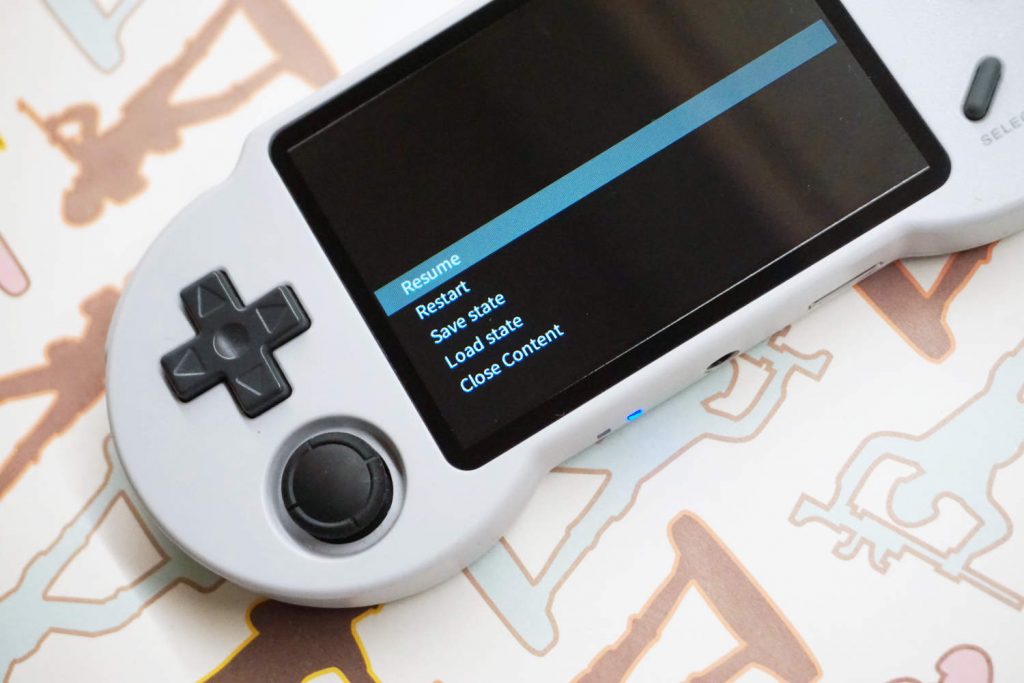
NEW OPERATING SYSTEM
All that aside, it hasn’t taken long for community developers to start fixing these issues and adding more functionality to the machine. And because all the Linuxy bits are tucked away on an internal flash memory chip, you can simply drag and drop any new OS onto your FAT32 formatted card. Don’t forget to backup your ROMs and BIOS first!
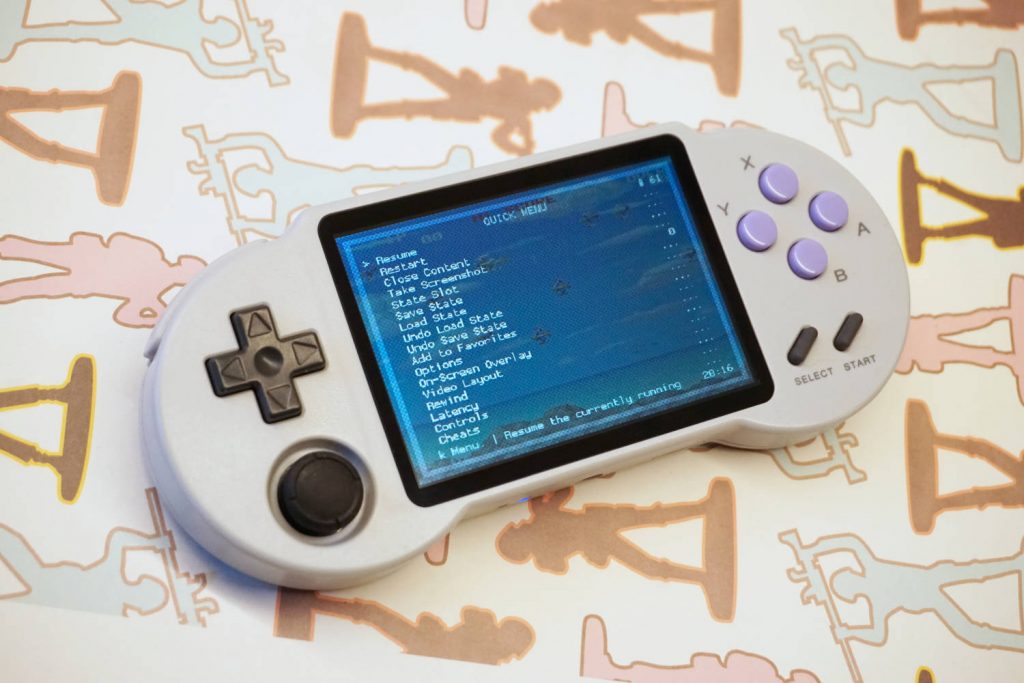
The version of RetroArch has been updated from a 2017 build on stock, to version 1.9.0 which was released this year. The updated software for the PocketGo S30 also replaces all the stock emulators with (mostly) properly configured RetroArch cores instead. In some cases these are more up to date and will give you better performance, but don’t expect miracles. In all cases tapping the power button now brings up RetroArch settings for each core, which you can configure as you wish without editing text files on your PC.
Oh, and N64 has been added back in though it’s very hit and miss right now. For example Mario Kart seems to run OK ish, but the analog stick is really unresponsive even with deadzone and sensitivity settings updated. In RR64 the analog stick works just fine though. :shrug:
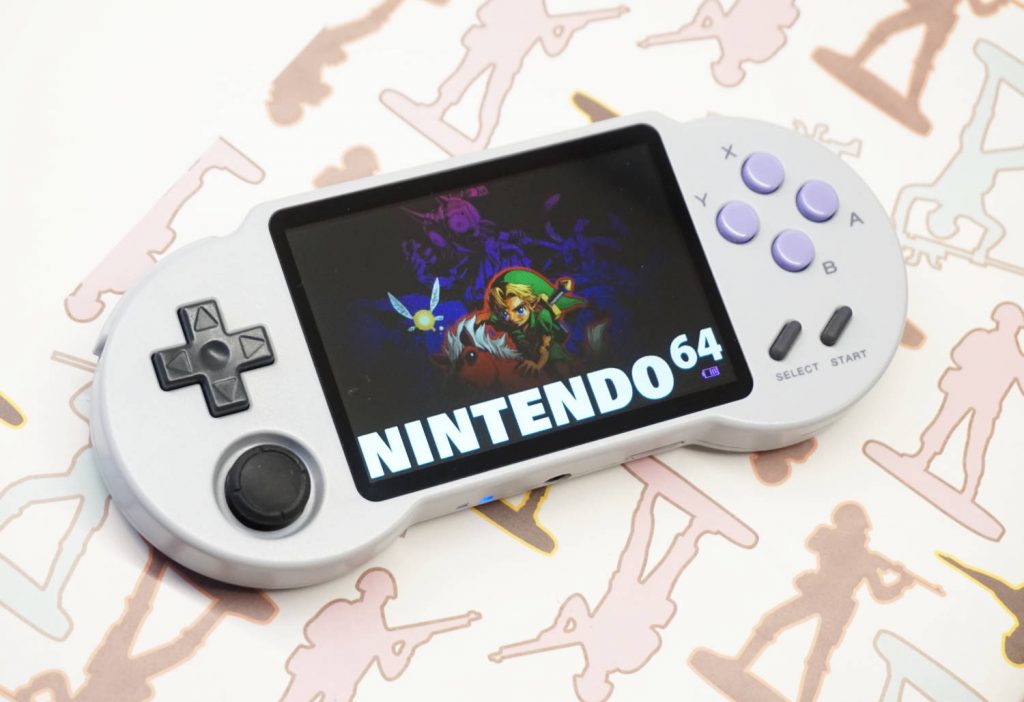
You can find the replacement software for the PocketGo S30 here. We have onionsaregross from retrogamecorps and slaminger from techtoytinker as well as Bkacjios to thank for these improvements.
CONCLUSION
Sometimes it’s hard to predict which handhelds will take off, but in almost all cases it’s those where the community developers manage to make improvements over the stock system. The PocketGo S30 is no exception. The stock system might be OK for some, but most people just wouldn’t put up with it. On the flip side, the RetroArch based OS is much better, but there’s no denying that it’s a faff to configure.
With both RK3326 and AllWinner A33, a lot of 5th and 6th generation games still pose a problem due to lack of power. If decent SNES and PS1 emulation and a handful of playable N64, Dreamcast and PSP games is all you want then you have the choice. RK3326 will give you slightly better performance, at a higher price. AllWinner A33 will touch the same systems, but at a slightly lower compatibility and for a lesser price (in the case of the S30 at least). There is also the personal preference of OS to consider. We are spoiled for choice right now.
The PocketGo S30 is a well built and iconic looking handheld with a bright future ahead. It’s no powerhouse but it does have a price to match. Unfortunately the “keep it simple” approach didn’t really work out in this case, but if you’re willing to get your hands dirty you might find the S30 a worthy choice. As long as you can live without HDMI output and WiFi that is. I would recommend investing in a larger SD card than the 16GB one provided. If you’re very selective about the larger games you copy over you might get away with it, but the new OS occupies over 2GB of that space alone.
Thank you to retromimi for donating this PocketGo S30 for review. If you’re after one, you can check the affiliated link below. It’s also available at many other retailers, so go where the price is best.
Thanks for reading, and thanks for the nice comments in the “we’re back” post.

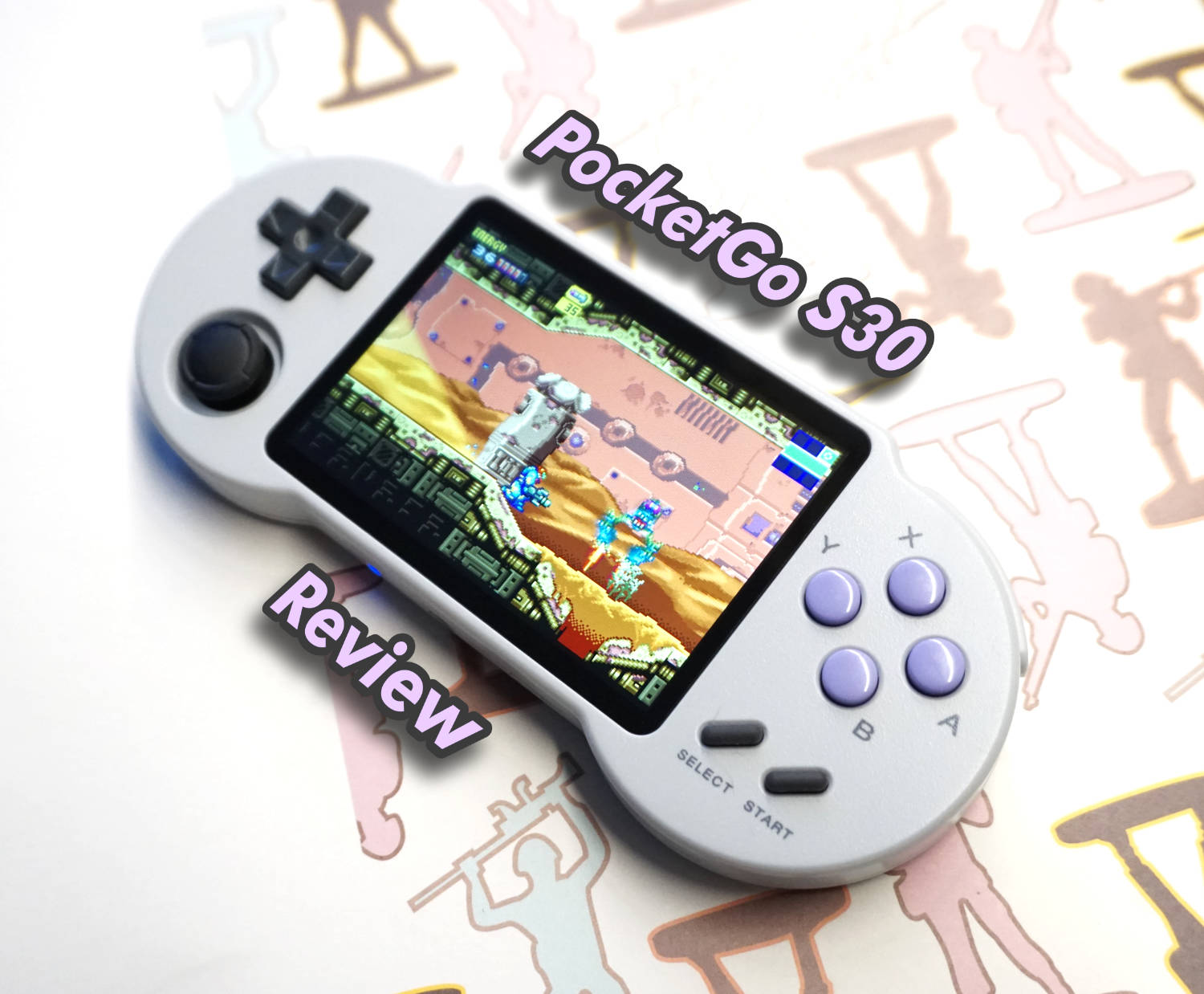
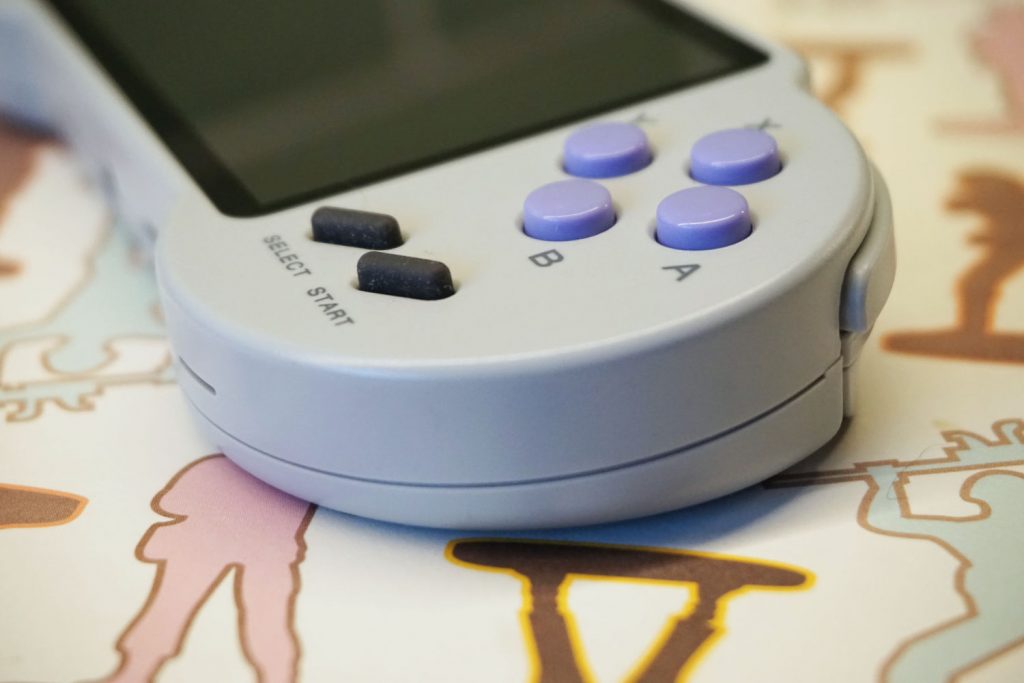
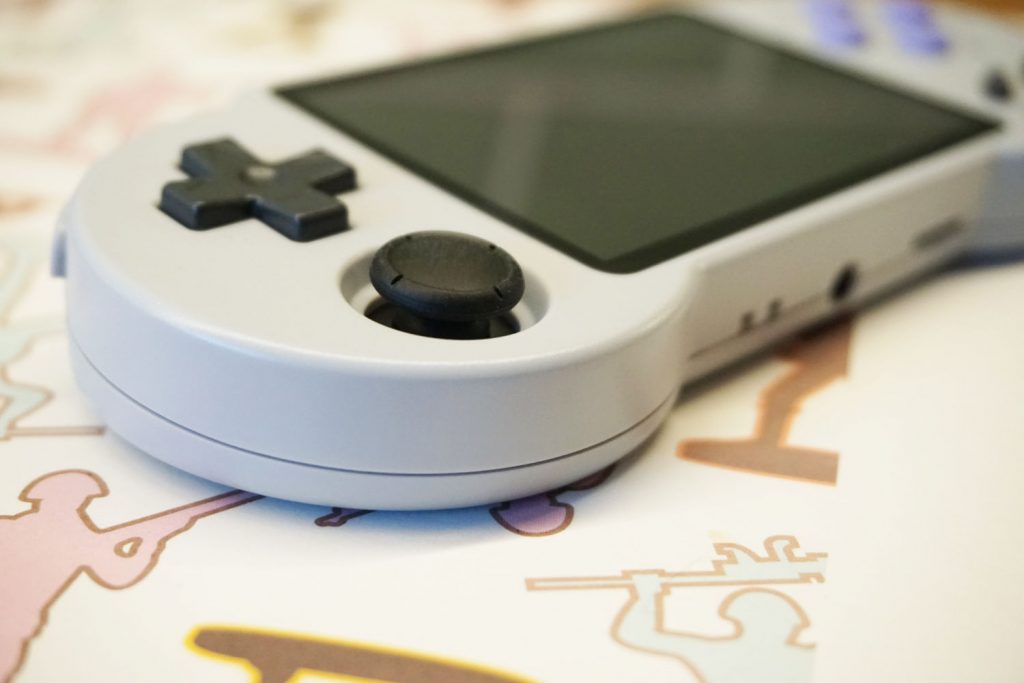
I’m surprised nobody mentioned the flaw with the audio. It has been driving me nuts on GBA and I finally found out that there’s a known issue of the speaker -and headphones – only outputing the left channel. Yes, not even mono where both channels go through one speaker. Literally only half the sound is coming out. This is really painful on already rough sounding GBA roms. (Which is a shame given the resolution is ideal for GBA.) You can play with settings and turn down volume, but apparently the best fix is to force true mono with a DSP filter. You’ll probably have to add the files yourself since I don’t think Simple30 or stock has them yet. There also seems to be an input lag issue that’s hardware related, but I haven’t bothered with it. Just FYI. It’s worth talking about audio quality in reviews.
Thank you for the fantastic review.
You say that “You can also access all of this content just by plugging the device into your PC.”
Could you give more detail about the procedure?
When I plug the S30 to my PC I can’ access to the folder.
Thanks and keep up the good work!
Are you using the cable that came supplied with the device? Not all cables will work. If it’s not working, just eject the microSD and plug it directly into your PC, it’s the same result.
Thank you for the answer.
I tried with the original cable without success.
Then I tried another cable and it worked!
Thanks for the tip!
I’ve owned this for a few weeks now and am absolutely in love with the form factor. The community updates are plentiful and widespread, including bringing back cut support promised pre-release. (N64)
It’s a joy to pick up and play and has become my go-to device. It has a good scree, excellent ergonomics, good battery life and solid controls.
It’s easily the best device currently on offer in it’s price bracket. If it had a stronger chip it would also need a larger battery to offset the drain, easily increasing the price into the $100 realm, but for the sub-$80 marked this is the current king.
I’d rank it (1-10 scale):
Screen: 8
Controls: 9
Battery Life: 8
Comfort (long-play): 10
Emulation/power: 8
Appearance: 10
Overall: 9/10
I have mixed feelings about this device.
Looks great and the performance is there for what it is but this needs more time in the oven and not to great out of the box.
Such a shame.
Why don’t they understand that 3/2 480×320 is totally stupid for emulating mostly 4/3 320×240 games ?…
So, in Design and Performance, seems to be an Ideals sfc/SNES Machine. Exactly what I am searching for. I got an odroid go advanced and In don’t use it. As you say, updating, Testing and configurating the whole Software for every favourite Game feels like being at work, especially as I am working as an IT Professional.
The only Thing that I dont like are the Violet buttons. In Germany, the SNES Buttons are red yw Green and blue. Will there be an EU Version or can I buy Buttons?
I believe there are a different set of rgby buttons being made available soon yeah.
Bittboy is super easy to predict. Bittboy with crap d-pad, no surprise there. Pocket Go version 2 was the same. They don’t listen to their customers and their products clearly have the same issues over and over again.
At this point anything from Bittboy is an automatic pass for me.
It’s not that bad. Nothing like the PGv2.
This is hands down the best written review I’ve seen of this system anywhere. Great pictures, rock solid writing and a caring, honest opinion.
10/10 – Best independent handheld site on the net in my opinion
Thanks mate, that means a lot!